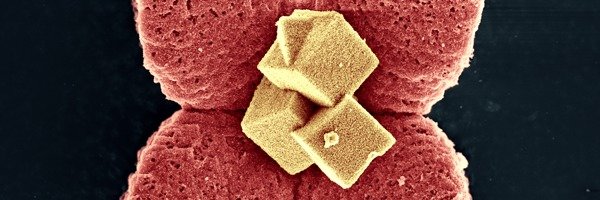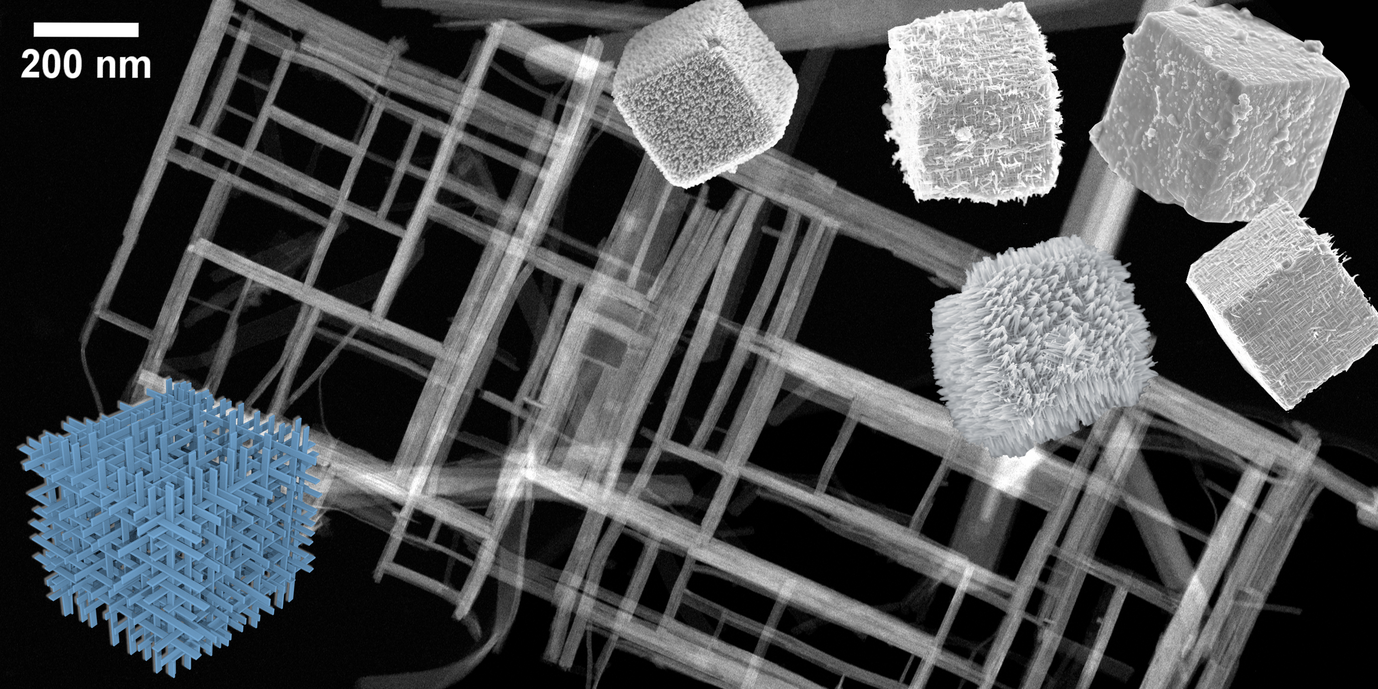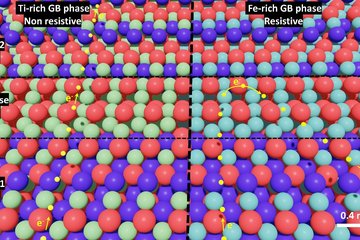
In-depth investigation of novel 3D niobium oxide based photocatalysts
Intelligent design of nanostructured materials forms the basis for high efficiencies in energy applications. 3D hierarchical niobium oxide nanostructures are investigated, as they form self-organized using a facile one-step synthesis approach. Electron microscopic investigations in combination with different spectroscopic methods are used to analyse these superstructures heading towards a better understanding of the forces involved in self-organization at the nanoscale.
Nanostructuring of materials results in modified properties compared to its bulk counterpart, e.g. altered electrochemical activity and band structure. Furthermore, nanostructuring of material results in enhanced surface areas, allowing more efficient light harvesting when it comes to applications, which convert solar energy in either chemical (water-splitting) or electric energy (solar-cells).

A large variety of synthetic strategies to nanostructured materials were developed in the past, among which strategies utilizing self-organization stand out due to their simplicity, not requiring multi-step processes or templates. Several examples show that hydrothermal conditions, which take advantage of high pressures and temperatures and thus modified dielectric properties to crystallize materials at comparably low temperatures, favor the self-organized formation of nanostructures. Using this synthetic strategy, we are able to synthesize highly ordered three-dimensional superstructures consisting of Nb3O7(OH), a material with a band-gap of 3.2 eV as well as proven water-splitting capabilities. The cubic superstructures are built up from highly-ordered nanowire-networks which form the walls of the hollow cubes. Additional nanowires extending like spikes from the surface of the cubes further increase their surface area. The variation of distinct synthesis parameters allows us to rationally control the morphology of these superstructures.
To date a basic understanding of the forces triggering the self-organized formation of complex nanostructures is still missing. In this regard, our investigation focuses on an understanding of the constitution of the superstructures at the atomic scale applying transmission electron microscopy (TEM), scanning electron microscopy (SEM) and electron-energy loss spectroscopy (EELS) and combine the results achieved with these methods to large-scale analysis methods like UV/Vis spectroscopy and X-ray diffraction experiments. 3D reconstructions of the superstructures by employing electron tomography on the nanoscale give insight into the morphologies and connectivity of the underlying nanowire network. Furthermore, we are testing the material in functional devices to investigate its potential for application. The thermal stability is investigated by ex-situ and in-situ experiments.












